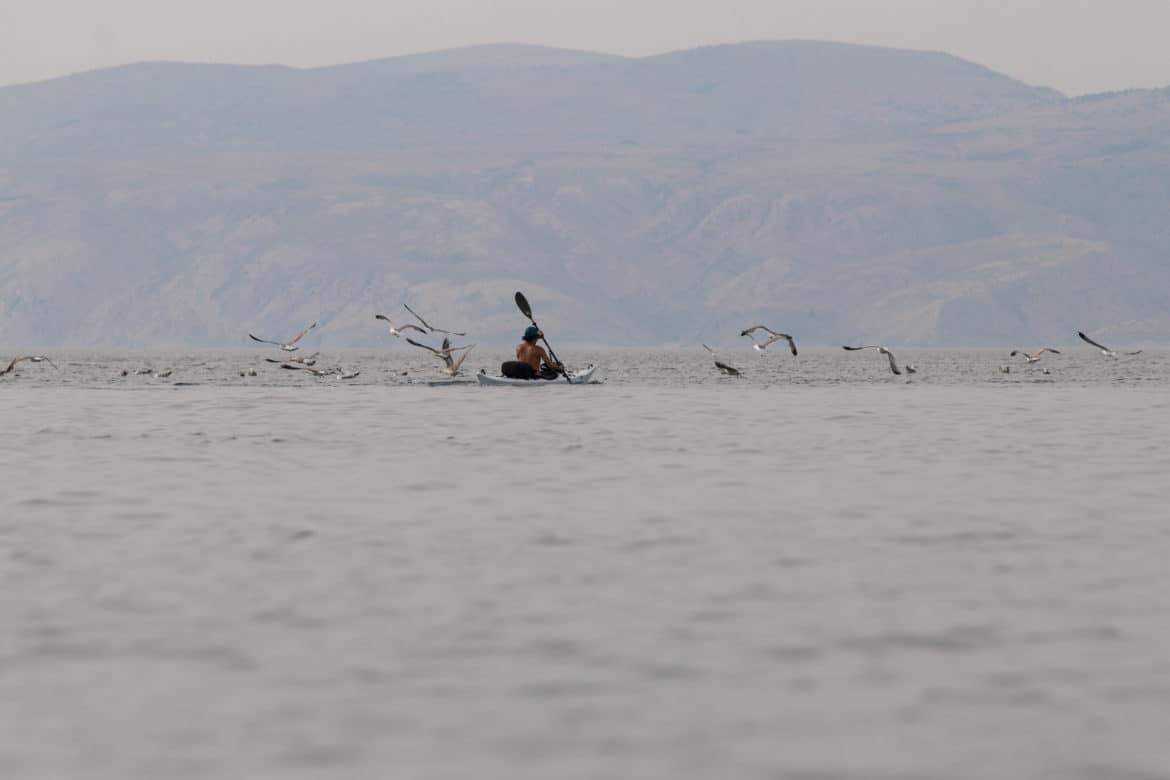Water sports are a highly popular activity, and kayaking, in particular, is a growing area. The number of active kayakers in the United States has been slowly but steadily rising over the last fifteen years. Currently, the sport is at the point where there are more than 16.5 million people involved. The number of sea kayakers is currently much less and this can be attributed to two things, geography, and a perceived danger element.
While there are certain extra risks and dangers when heading out into open water, there are many differences between sea and recreational kayaks. Sea kayaking can be a great experience and an activity that expands your enjoyment of water sports as long as you know how to do it safely.
The article below will help you to understand the differences between the two types of kayaking and explain to beginners what the dangers are and how to safely enjoy the sport.
Table of Contents
What are the contrasts between sea kayaks and recreational ones?
The very first thing that anyone looking to switch to sea kayaking will notice is that the kayaks themselves are very different types of paddle craft.
There are actually a whole plethora of different styles of kayaks but the sea version is a type of touring kayak. It is designed so that it can handle rough waters and will be less likely to get swamped. However, it loses some stability in the design.
They will have a narrow profile and a higher rocker than other kayaks, and much less suited to flat water than other kayaks, and less stable. On the other hand, many people do like to use them on rivers so long as they aren’t too bendy and there isn’t any real white water.
One big difference between a sea and a recreational kayak is that they can carry a lot of other equipment. They are designed for much more than just day trips or meandering about on the water.
Learning to kayak opens up a world of possibilities for exploration and adventure, whether you’re gliding along coastal shores, traversing vast lakes, or embarking on thrilling expeditions in diverse environments.
What can you do with a sea kayak?
Sea kayaks can be taken out to use along the coast or over large expanses such as lakes. One of the main purposes of a sea kayak is that it can be used for long trips or expeditions. There is no reason why they cannot be used in a variety of environments including the tropics or colder regions.
Sea kayaks can be used for long fishing trips and camping. Indeed, combining camping with a sea kayak is an ideal way to put together two of the best outdoor hobbies there are.
A sea kayak can allow you to visit some of the best kayaking spots in the world, such as the Sea of Cortez in Mexico, and Kenai Fjords in Alaska. If you fancied the tropics and Southeast Asia then you could explore HaLong Bay in Vietnam.
While there are some limitations to a sea kayak compared to some other types, there are also many opportunities that are only available or better suited to the sea variant.
What equipment do you need for sea kayaking?
Of course, any new sport or activity includes the need for some investment. A list of sea kayak equipment may look something like this:
- Safety equipment – throw lines, bilge pump, first aid kit, etc
- Clothing – thermals, base layers, dry suits
- Buoyancy aids – life jacket
- Paddle
- Spraydeck
- Electronics – VHF radio, nav light, fish finder
- Deck bags
- Dry bags
A life jacket should be worn by anyone kayaking but for the open water, it is a must-have. VHF radios allow communication with other users and the emergency channel. You can also use a fish finder when you are exploring as these can help not only locate fish but also map the sea bed. This means avoiding shallow rocks, reefs, and sandbanks.
The dangers of sea kayaking
Now you know a few very basic details about sea kayaks and what you can do with them, it is time to see if they are actually dangerous to use. Anyone who has been kayaking will understand that there are dangers associated with the activity. It doesn’t matter whether you are a recreational kayaker or more into the activity as a sport and enjoy whitewater, there are risks involved.
Firstly, you are going to be in a bigger expanse of water than you are used to. There may be no nearby land once you start paddling further out and you will need to be aware of tiring, but there are other risks too.
Large mammals
Depending on where you go there could also be sharks and whales. While none of these mammals may intend to hurt you, kayaking near whales can be extremely dangerous. Not only do they represent a danger to you, but you can cause stress to them also, so it is important to steer clear.
Shipping
Your clothing and safety wear should be made up of bright, visible colors so you are clearly seen. Large ships take a long time to slow and go faster than you might imagine, so crossing their path is a complete no-no.
The elements
If you suffer a capsize, or you are alone in bad weather, cold and tired, you could end up with hypothermia. This could be a huge problem if you are kayaking alone.
Also, if you see or hear a storm approaching, get to land as soon as possible. Storms can come in extremely quickly, and you could even attract lightning if there are no other objects nearby.
Waves and currents
You can be drawn away from where you want to head by strong currents. This is a skill you will have to learn and it will take a lot of effort to move away from tidal currents. As for waves, be aware of them but there isn’t a lot you can do. If you don’t like them, stick to lakes.
Basic safety tips for sea kayaking
- When looking at an introduction to sea kayaking for beginners, the first thing on there should be safety tips. First and foremost you need to tell people where you are going.
- Make a paddle plan and alert others to where you are expecting to be at certain times, and how long you will be gone for, and how many of you are heading out. Make sure you also check the weather and be aware of any sudden changes.
- Appropriate clothing must be worn, and include a life vest and also put on a helmet. If you are hit by a significant wave you will be happy you wore one.
- Do not overload the boat but do make sure you have plenty of food and water. Staying hydrated is extremely important and will help your concentration levels.
- Lastly, practice a lot before you start being too adventurous. Understand your skill level and limits, and practice rescue techniques on yourself, and others.
Summary
Sea kayaking is an adventurous activity that can really expand your enjoyment of this particular water sport. While there are inherent dangers with the ocean, sea kayaking can be performed safely as long as some rules are followed.
Following simple safety protocols such as making paddle plans and checking the weather will set you up for a safer trip. Safety equipment and a good sea kayak will also help ensure you enjoy your adventure without any worry.

